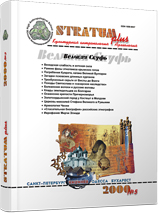Джурджулештская находка в зеркале ювелирной моды Х-XI вв.
Giurgiuleşti Find in the Mirror of Jewellery Fashion of X-XI centuries
Author(s): Oleg Leviţki, Vasile Haheu, Svetlana S. RyabtsevaSubject(s): History, Archaeology, Visual Arts, Middle Ages, 6th to 12th Centuries
Published by: Издательский дом Stratum, Университет «Высшая антропологическая школа»
Summary/Abstract: The article is dedicated to a child’s burial found in 1997 during excavations on Giurgiulesti grave ground. The grave contained a bright and unusual for Moldova set of grave goods. The authors collected a vast number of analogues for the most significant find in this complex – globular embossed buttons decorated with granules. All analogues of the find from Giurgiulesti come from horde of silver decorations of the middle X-XI centuries, placed along a large arc embracing basins of Vistula, Danube, Dniester and Dnieper. The article makes a reconstruction of a silver jewellery head dress of the middle X – early XI cc., which was worn together with a dress decorated with silver buttons decorated with granules. This dress could consist of: «Wolyn’ ear rings»; necklaces made of silver beads decorated with granules, semi-globular and crescent-shaped pendants; wire bracelets with disjoint or knit ends; rings with semi-globular shield. Such vast geography of spread of these complexes with similar goods provides evidence of a common fashion existing in the middle X - early XI cc. for ceremonial jewellery dress, spread among the elite over a vast territory from Poland to Dnieper. Spread of these types of decorations is due to both migration of western Slavs to the east and movement of silver along the network of roads connecting basins of Dnieper, Dniester, Western Boug, Danube and Vistula. Decorations of this style on territory of the Eastern Europe seemed to be made by masters of Wolyn’-Kiev and Dniester workshop centres, while prototypes of decorations used in the dress of middle X – early XI cc. mainly come from Western Slavic antiquities of Danube lands of IX c.
Journal: Stratum plus. Археология и культурная антропология
- Issue Year: 2000
- Issue No: 5
- Page Range: 90-96
- Page Count: 7
- Language: Russian
- Content File-PDF

